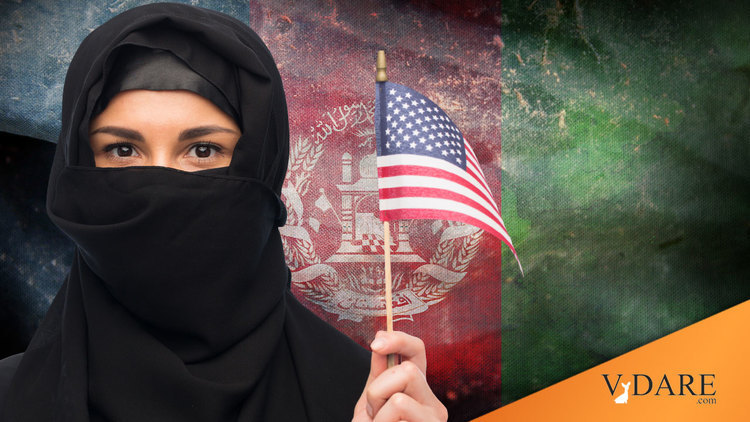


05/04/2012
Immigration-fueled diversity is on the march in America!
How crazy can a nation be to welcome the tribe that killed thousands of its own people just ten years ago?
Below, in 2009 thousands of Muslims massed for a pray-in at the US capitol to show their numerical strength.

Citizens of terror-supporting countries are no problema to diversity-enthralled bureaucrat suits. In 2007, the GAO reported that nearly 10,000 persons from terror-supporting states were given diversity visas from 2000 to 2006. (Read the GAO’s original report, Fraud Risks Complicate State’s Ability to Manage Diversity Visa Program.)
And jihadist plots have increased sharply in the last few years. As terror analyst Walid Phares noted in 2010, “According to open-source reports, between 2001 and 2008, U.S. agencies stopped one or two terror attempts a year. However, from 2009 until today, the government has been uncovering one or two cases a month, a troubling growth in jihadi activities.”
In addition to national security threats, Muslim immigration has also brought appalling cultural practices like polygamy (which even NPR noticed) and honor killing for young Muslim women who want to be free individuals. When Islamic immigration increases, so does violence against women.
What’s the upside of Muslims? Falafel??
Cost-benefit analysis says no. Muslim immigration should end, for the good of the country.
Number of Muslims in the U.S. doubles since 9/11, New York Daily News, May 3, 2012
A new survey reveals the dramatically changing face of religion in America, with the number of Muslims in the U.S. soaring 67% in the decade since the 9/11 attacks.
Data released Tuesday from the 2010 U.S. Religion Census shows Islam was the fastest growing religion in America in the last 10 years, with 2.6 million living in the U.S. today, up from 1 million in 2000.
Mormonism too saw remarkable growth, with a 45% increase in adherents. It added nearly 2 million members since 2000, bringing their number in the U.S. to 6.1 million.
“Both of these groups entered more than 200 counties that they weren’t in 10 years ago,” said Dale Jones, data analyst and mapping specialist for the Religion Census.
The findings represent religious people who attend services. Census surveyors collected data on congregational adherents of 236 religious groups, including full members, their children and others who regularly attend services, with a 5% margin of error.
In the Midwest and parts of the South there are now more Muslims than Jews for the first time. Immigration from parts of the Muslim world and a small rise in conversions are the driving force behind the growth, researchers said. Jones also speculated that the burst of anti-Islam sentiment after the 9/11 attacks could have done more to grow the religion’s presence in the U.S. than slow it. Those on the fence about converting to Islam may have decided to do so on principle.
“Persecution is sometimes good for a religious group — in the sense of being able to attract more followers, for some reason,” Jones said. “Rarely is opposition a very effective tool in stopping the growth of a movement.”
Dr. Ihsan Bagby, associate proessor of Islamic studies at the University of Kentucky, agreed that any negative sentiments against Islam has only built up resiliance in the Muslim community. “You get stronger with resistance,” he said. “If everything is just peachy keen, it’s hard to grow. I think the anti-Muslim atmosphere in certain segments of the public square have actually made Muslims more religious.”
The Mormon faith, formally called Church of Jesus Christ of Latter-day Saints, spread beyond the “Mormon Corridor” of Utah, Idaho and parts of Nevada and Arizona, the study also found.
Christianity and Catholicism both saw a small decrease in membership, while the number of Americans who don’t identify with any organized religion grew considerably, the report showed.
More than 158 million Americans fell into the “unclaimed” category — more than triple the amount of even the most popular religions in the country.
The data was collected by the Association of Statisticians of American Religious Bodies and released by the Association of Religion Data Archives. The full report and detailed maps are available on the ARDA website.